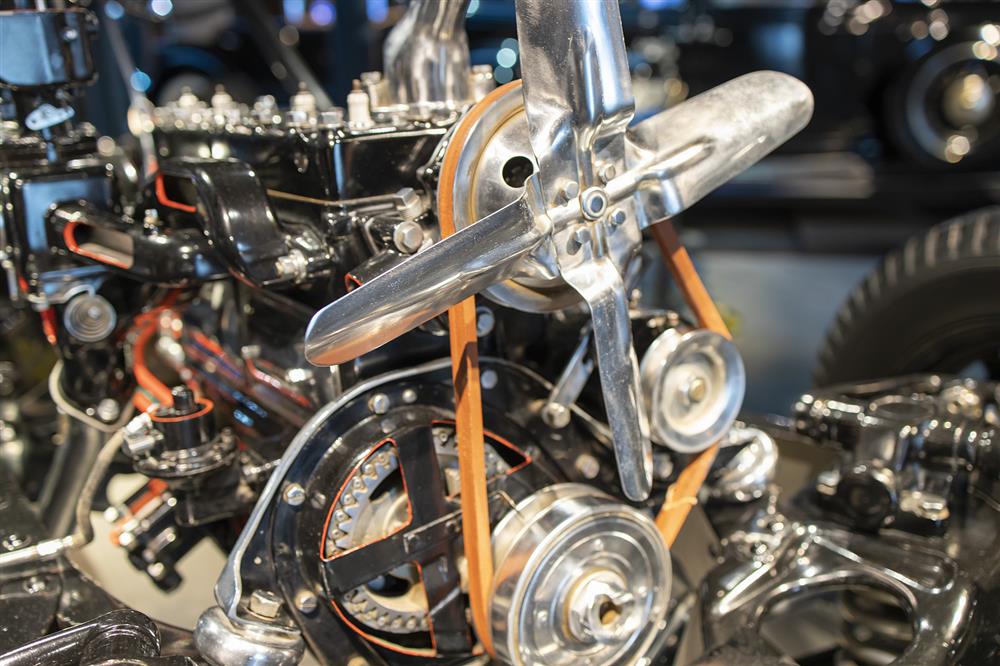
Classic cars are a passion for many car enthusiasts. It's a pleasure to drive, care for, and keep a classic cruiser, muscle car or classic truck in top-notch condition. However, when it comes to the cooling system of a classic vehicle, it can be a challenging task to choose between keeping a clutch fan or upgrading to an electric fan. We will compare both the clutch and electric fan options and provide guidance on which is better for your classic ride.
First let's breakdown the two options:
Clutch Fan: A clutch fan is a mechanical device that is bolted directly to the engine's water pump. It is a component that uses a thermostatic spring to engage or disengage the fan blades from the pulley according to the engine's temperature. When the engine is cold, the fan blades disengage, and the fan doesn't turn, allowing the engine to warm up faster. Once the engine reaches a certain temperature, the thermostatic spring engages the fan blades, and the fan begins to turn, pulling air through the radiator and cooling the engine.
Advantages of the clutch fan setup:
- It has a simple design and is relatively easy to install.
- It doesn't require any electrical connections, making it easier to maintain and troubleshoot.
- It is a cost-effective solution for cooling a classic car.
Disadvantages of the clutch fan:
- It uses engine power to operate, which can result in a decrease in fuel efficiency.
- It is more prone to failure than electric fans.
- It can create excessive noise and vibration.
Electric Fan: An electric fan, on the other hand, is an electrically powered device that uses a motor to turn the fan blades. It is usually mounted in front of the radiator and controlled by a thermostat or a fan controller. It can have one large fan, or two individual fans with the choice to run in parallel or independently.
Advantages of an electric fan setup:
- It provides consistent and reliable cooling.
- It consumes less engine power, resulting in improved fuel efficiency.
- It produces less noise and vibration.
- It can be controlled by a thermostat or a fan controller, making it more efficient.
Disadvantages of the electric fan:
- It requires electrical connections, which can be challenging to install.
- It is more expensive than a clutch fan.
- Does not have the factory OEM appearance.
Upgrading from a clutch fan to an electric fan can help a vehicle's AC system run more efficiently in several ways.
First, an electric fan is designed to work independently of the engine's RPM, which means that it can maintain a steady airflow through the radiator even at low engine speeds or when the vehicle is idling. This can help to reduce the temperature of the engine and the AC system, which in turn reduces the load on the AC compressor and improves its performance.
Secondly, an electric fan consumes less power from the engine compared to a clutch fan, which means that there is more power available to run the AC system. This can lead to improved AC performance, especially when the vehicle is idling or driving at low speeds.
Additionally, an electric fan can be controlled by a thermostat or a fan controller, which means that it can be adjusted to run only when it is needed. This helps to reduce unnecessary power consumption and improve the overall efficiency of the AC system.
Lastly, an electric fan produces less noise and vibration compared to a clutch fan, which can improve the overall driving experience.
Considering all the pros and cons, upgrading from a clutch fan to an electric fan can help to improve the efficiency of a vehicle's AC system by maintaining a steady airflow through the radiator, reducing power consumption, and improving overall performance. Here at Original Air, we recommend upgrading to an electric fan setup as current electric fans can move more air through the condenser leading to a significantly more efficient AC system than what was installed from the factory.
Would you consider upgrading your setup from clutch fan to an electric fan?
